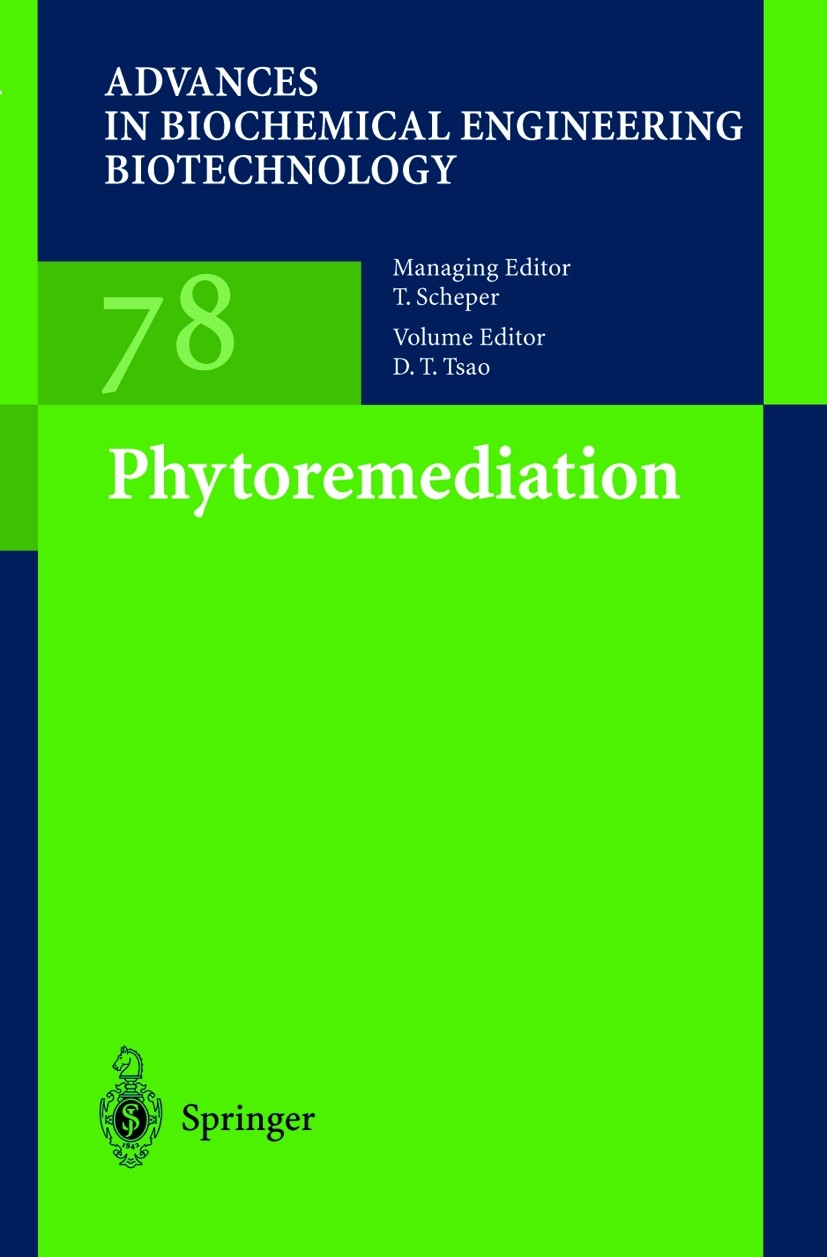| 书目名称 | Phytoremediation | | 编辑 | David T. Tsao | | 视频video | http://file.papertrans.cn/748/747873/747873.mp4 | | 概述 | This review series covers trends in modern biotechnology.All aspects of this interdisciplinary technology, where knowledge, methods and expertise are required from chemistry, biochemistry, microbiolog | | 丛书名称 | Advances in Biochemical Engineering/Biotechnology | | 图书封面 |  | | 描述 | The environmental clean up industry has been estimated as having an annual turnover of $50 billion globally. With new regulations being written on addi tional chemicals that are just, now, becoming understood from a toxicological and environmental risk standpoint, this industry could expand even further. This is particularly true as more nations become industrialized. Typical conta minants that are of concern include agricultural byproducts, municipal wastes, industrial solvents, petroleum hydrocarbons, heavy metals, pesticides, radioac tive wastes, munitions, and other man made products. In order to treat and remediate these contaminants, practioners have several "tools" in the remediation "toolbox" including physical, chemical, and biological methods. One relatively new biological method that has been applied to address various environmental concerns is phytotechnologies. The method is defined as the use of vegetation to contain, sequester, remove, or degrade inorganic and organic contaminants in soils, sediments, surface waters, and groundwater. Although its roots were developed from other disciplines such as agronomy, agricultural engineering, chemical engineering, forestry, ho | | 出版日期 | Book 2003 | | 关键词 | Angewandte Mikrobiologie; Biochemisches Ingenieurwesen; Biotechnologie; Biotechnology; Mikrobiologie der | | 版次 | 1 | | doi | https://doi.org/10.1007/3-540-45991-X | | isbn_softcover | 978-3-642-07776-0 | | isbn_ebook | 978-3-540-45991-0Series ISSN 0724-6145 Series E-ISSN 1616-8542 | | issn_series | 0724-6145 | | copyright | Springer-Verlag Berlin Heidelberg 2003 |
The information of publication is updating

|
|
 |Archiver|手机版|小黑屋|
派博传思国际
( 京公网安备110108008328)
GMT+8, 2025-11-22 08:16
|Archiver|手机版|小黑屋|
派博传思国际
( 京公网安备110108008328)
GMT+8, 2025-11-22 08:16


